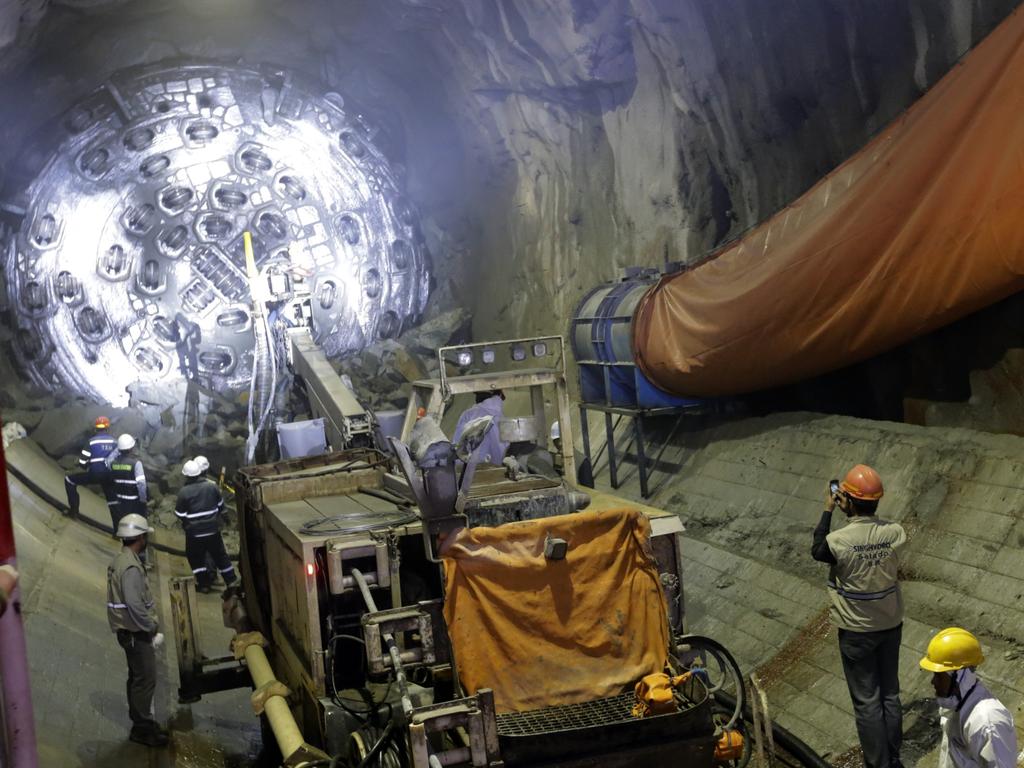China in decline a greater danger to the global order


China’s untrammelled rise as a major economic and strategic power has been the main structural driver of the global order these past three decades, reshaping trading patterns, diplomatic alliances and the centre of world gravity. China’s rise has been driven by economic reform and opening, but also by favourable demography – a growing and urbanising working-age population.
But as recent Chinese census data reveals, this demographic tailwind has now gone into reverse. China’s population fell in 2022, for the first time since 1961, dropping by 850,000 to 1.41 billion. This is no statistical blip. It reflects a steady drop in China’s birth rate, prompted at first by the introduction of the one-child policy in 1980, and since driven by higher household incomes and the accompanying tendency toward smaller families and having children later.
Steps to relax the one-child policy, by raising the limit to two in 2016 and then three in 2021, and state incentives to have more children, have failed to reverse this trend. China’s fertility rate is now 1.18 children per female, lower than many Western countries and lower even than Japan.
This matters globally for three reasons.
First, much of China’s growth in recent years has been driven by its “demographic dividend”, a surge in its working-age population. But China’s working-age population peaked in 2021, and as the birth rate will remain low and life expectancy is growing, China’s working-age share of its population will continue to decline. There will now be fewer workers supporting more elderly, putting a strain on growth, curtailing public finances and limiting the resources available for military and global expansion.
Second, the great deflationary impact of China on the global economy over the past three decades is at an end. The entry of China into the global economy, its surge in working-age population, and migration from rural to urban areas all contributed to a global labour supply shock in manufactured and tradeable goods
As Charles Goodhart and Manoj Pradhan detail in The Great Demographic Reversal, China increased its working-age population by more than 240 million between 1990 and 2017. Coupled with internal migration from rural to urban China, and integration into the global economy, this effectively doubled the world’s workforce in the production of tradeable goods.
More than central bank policies around the world, this labour supply shock had a huge impact in suppressing global inflation. It kept prices low and labour markets competitive. So the resurgence in global inflation we are seeing, while it has some cyclical elements (post-Covid pent-up demand and supply chain issues, Russia’s war in Ukraine), also has a structural element that central banks will struggle to address.
Third, a shrinking population will curtail China’s weight as a global power. Favourable demography has been an essential component in China’s emergence as a major power, but this is now going into reverse. While China’s economy will continue to grow, it will grow more slowly, and gains will need to come from labour productivity, not population growth. China’s counterweight in the Indo-Pacific, India, will eclipse China’s population in the first quarter of this year.
In the sails of every rising power in global history has blown a strong demographic tailwind. From the US in the 19th century to Japan and Germany in the early 20th century, a youthful and growing population has driven economic growth, fuelled national ambition, and staffed and equipped a modern military.
This tailwind for China is now over. Its power on the global stage may already have peaked, or be close to peaking.
But in many instances this marks one of the more dangerous periods in global affairs, which tends to be disrupted more often by declining rather than rising powers.
If the tide of history is with it, a great power can afford to bide its time. But if the tide of history turns against it, the temptation for a global power can be to create “facts on the ground”, and force enduring changes in the global order, to entrench its power at its peak.
Sparta went to war with Athens, Thucydides writes, because of a fear of its decline in power relative to Athens.
Germany triggered World War I in part because it feared the rising power of Russia, and considered it better to fight a war against Russia sooner rather than later.
Vladimir Putin has engaged in all manner of military adventurism and conquest in his attempts to preserve Russia’s status as a global power.
At the very moment the West is getting its act back together, President Xi Jinping is grappling with China’s slowest economic growth in 40 years, a chaotic exit from Covid, and now a declining population.
Time no longer appears to be on Xi’s side in his global ambitions for China. This might make the next few years one of the most dangerous periods yet for global order.
Dave Sharma is a former ambassador for Australia and is the former Liberal member for the seat of Wentworth.







When it comes to national power, demography might not be everything, but in the long run it’s almost everything.